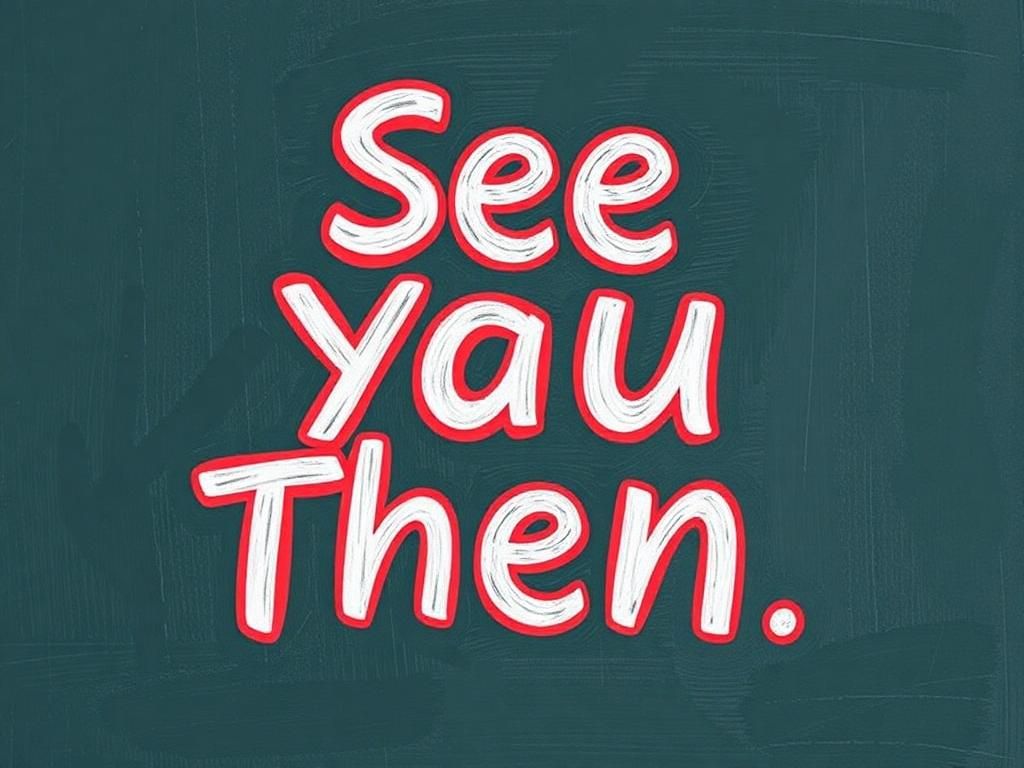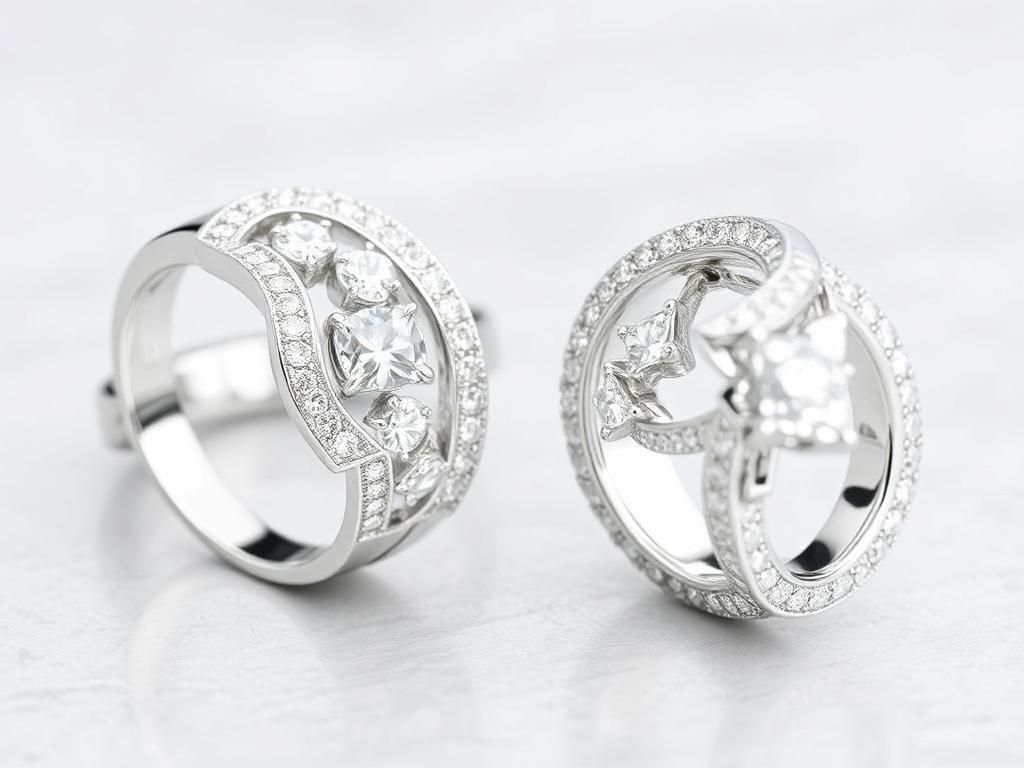The phrase “See you then” often pops up in casual and friendly conversations, especially when plans are being finalized. It serves as a warm, informal way to affirm a future meeting or gathering. The response you give to such a statement can significantly affect the nature of the interaction that follows. Responding appropriately not only showcases your politeness but also enhances your social connections.
Understanding the Context
Situational Usage of “See You Then”
Whether it’s a friend scheduling a coffee date or a colleague confirming a meeting, understanding the context of “see you then” is crucial. This phrase is used in various arrangements:
- Friend or colleague arrangements: Most commonly, the phrase appears in casual settings, among friends or acquaintances.
- Formal versus informal contexts: While you may encounter “see you then” in formal situations, the expectations for responses differ greatly between casual and professional environments.
- Implications of the phrase in different settings: In a casual context, it implies excitement, while in a formal setting, it may lean toward mere acknowledgment.
Emotional Tone
The emotional tone conveyed through “see you then” can vary:
- Positive connotations: Often, it expresses eagerness, suggesting that both parties are looking forward to the meeting.
- Neutral or ambiguous responses: Sometimes, it can be said without much enthusiasm, potentially implying indifference.
- Anticipation and excitement: In friendly contexts, it tends to invoke feelings of excitement about the upcoming interaction.
Types of Responses
Positive and Enthusiastic Responses
When you receive “see you then”, a robust and enthusiastic response can set a positive tone:
- Simple affirmations: A quick acknowledgment like “Can’t wait!” or “Looking forward to it!” communicates excitement.
- Adding excitement or anticipation: Enhance your response with something like “I’m really looking forward to our meeting!” to communicate your eagerness!
Neutral Responses
Sometimes a more subdued acknowledgment is more appropriate:
- Acknowledging the plan without extra enthusiasm: Responses like “Sounds good” or “Okay” are often seen as polite but neutral.
- When to choose a neutral response: If the context feels formal or if the other person seems less enthusiastic, a neutral response can be suitable.
Clarifying Responses
When details are unclear, asking for specifics can foster clear communication:
- Asking for details: If the timing or location of the meeting is uncertain, try saying “What time are we meeting again?” or “Where should we meet?”.
- Differentiating between informal and formal need for clarification: Casual acquaintances usually require less detail, whereas business associates may appreciate clarity.
Disagreeable or Alternative Responses
When the proposed arrangements do not suit you, it’s essential to communicate that:
- If plans don’t work for you: A response like “I can’t make it then, can we reschedule?” is both polite and clear.
- Offering alternative suggestions: Propose new times or venues to keep the conversation flowing positively.
Cultural Considerations
Variations Across Cultures
The way people respond to “see you then” can vary greatly depending on cultural norms:
- Understanding cultural nuances: In some cultures, this phrase may carry a different level of importance or urgency.
- Formality levels and how they affect the response: Always consider the cultural background when responding, as it can dictate the tone and content of your reply.
The Role of Non-verbal Communication
Non-verbal cues often enhance verbal communication:
- Body language and tone in conversation: A warm smile and an upbeat tone can complement your words, reinforcing a positive atmosphere.
- Importance of emojis or GIFs in digital communication: In texts or chats, using a cheerful emoji can boost your message’s positivity, making your response feel more engaging.
Tips for Effective Responses
Tailoring Your Response
It’s vital to customize your response according to the relationship dynamics:
- Adjusting based on relationship dynamics: The way you respond to friends may differ vastly compared to how you would reply to a superior.
- Anticipating the other person’s expectations: Understanding what the other person might find acceptable can go a long way in crafting your reply.
Practicing Active Listening
Effective communication goes hand-in-hand with active listening:
- Ensuring you understand the other person’s intent: Listen carefully to their tone and words to discern how close you should align your response.
- Reflecting back to show engagement: Echoing their enthusiasm with your response symbolizes your engagement with the conversation.
Crafting a Follow-up
Confirming plans solidifies arrangements:
- Importance of confirming plans: A follow-up message helps in ensuring both parties are still aligned on the arrangements.
- Examples of follow-up messages post-response: Phrases like “Just checking in about our meeting!” or “Looking forward to it! Let me know if anything changes.” work well.
Concluding Key Points
Responding appropriately to “see you then” is more than mere etiquette; it strengthens relationships. Keep your responses varied and appropriate for the situation, fostering clear and positive communication.
| Type of Response | Description | Example |
|---|---|---|
| Positive and Enthusiastic | Expresses excitement and eagerness. | “Can’t wait!” |
| Neutral | Acknowledges the plan without much enthusiasm. | “Sounds good.” |
| Clarifying | Asks for specifics if details are unclear. | “What time are we meeting again?” |
| Disagreeable | Politely expresses inability to meet. | “I can’t make it, can we reschedule?” |
FAQ
1. What does “See you then” imply?
This phrase typically indicates a plan for a future meeting and usually conveys enthusiasm or acknowledgment.
2. How should I respond to “See you then” if I am not excited?
A neutral response such as “Sounds good” is appropriate when expressing indifference.
3. Can the context change the meaning of “See you then”?
Yes, the tone and context (formal vs informal) can alter its implication significantly.
4. What are some positive responses to “See you then”?
Phrases like “Looking forward to it!” or “I can’t wait to catch up!” work well.
5. When should I ask for clarification?
If the time or place of the meeting is unclear, it’s best to ask for confirmation.
6. Is it necessary to respond to “See you then”?
While polite responses are not strictly necessary, they help to strengthen social connections.
7. How do cultural differences impact my response?
Cultural norms can dictate the expected level of enthusiasm or informality in your response.
8. Can non-verbal cues enhance my response?
Absolutely! Positive body language, tone, and digital emojis can effectively complement your verbal response.
9. What best way to decline a plan while using “See you then”?
Politely state your inability to participate and suggest alternatives.
10. How important is follow-up in confirming arrangements?
A follow-up message reassures both parties about the plan and shows engagement.


